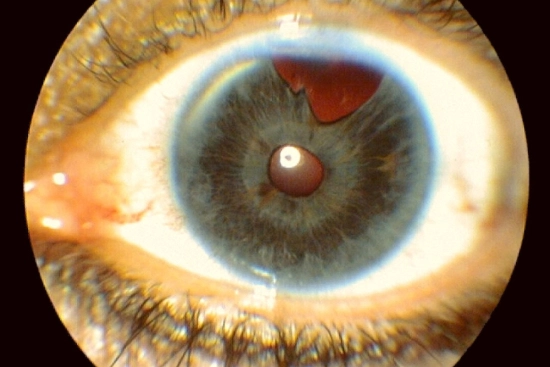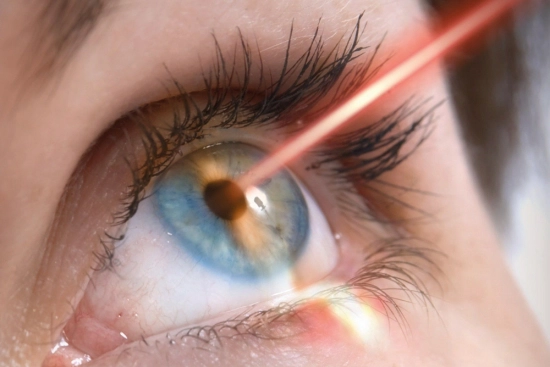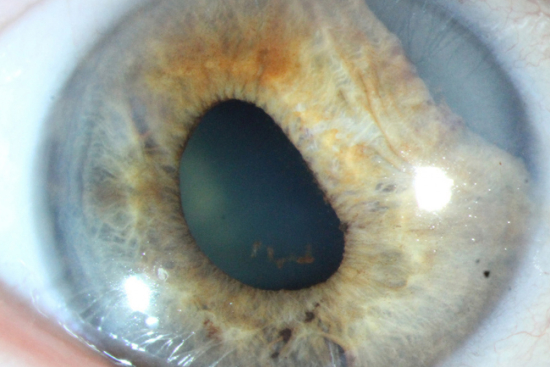Often caused by eye trauma, iridodialysis is a detachment of the iris, the colored part of the eye. This complication can jeopardize the health of the eye and lead to serious vision problems that require prompt surgical treatment.
- People suffering from iris detachment.
- 30 to 60 minutes.
Best Clinics with Verified Reviews

- Multispecialized hospital
- 7 operating rooms
- Capacity é of 170 beds

- Multispecialized hospital
- Hospital founded in 2007
- Very good reputation in ENT department
What is iridodialysis?
You may never have heard of iridodialysis. Yet this detachment of the iris, the colored part of the eye, can have major consequences for vision.
By detaching from its natural base at the level of the ciliary body, the iris compromises the normal functioning of the eye and often requires specialized medical treatment.
If you've suffered eye trauma or are experiencing unexplained visual problems, consult an ophthalmologist as soon as possible.
Symptoms of iridodialysis (iris detachment)
Iridodialysis manifests itself through a variety of symptoms, the intensity of which varies according to the extent of iris detachment. Among the most common signs are :
- Eye pain.
- Blurred vision.
- The appearance of luminous halos around light sources.
- Pupil dilation (mydriasis).
- The perception of floating bodies in front of the eyes.

Causes of iris detachment
Iridodialysis is a tear in the iris that can occur as a result of a variety of factors.
The causes of iridodialysis are varied and may include:
- Ocular trauma, whether direct or indirect (bumps, blows, etc.)
- Surgical procedures, especially those involving the anterior segment of the eye (e.g., cataract surgery)
- Eye diseases such as acute glaucoma characterized by an increase in intraocular pressure.
Age-related degenerative processes associated with progressive atrophy of ocular tissues.
Treatment of iridodialysis in Turkey
Treatment of iridodialysis in Turkey depends on the severity of symptoms and the underlying cause.
Initial medical treatment
In some cases of iridodialysis, conservative medical treatment may be sufficient to relieve pain and reduce ocular inflammation. This type of treatment is generally considered first-line, especially when the iris tear is small and symptoms are moderate.
The most commonly used medical treatments include :
- Mydriatics: These drugs dilate the pupil, reducing traction on the torn iris and easing pain.
- Cycloplegics: By paralyzing the ciliary muscle, they reduce spasms and improve ocular comfort.
- Non-steroidal anti-inflammatory drugs (NSAIDs): These eye drops reduce inflammation and relieve eye pain.
- Corticosteroids: These drugs have powerful anti-inflammatory properties and can be used as a complement to other treatments.
The aim of this medical treatment is twofold: to improve patient comfort by relieving pain and inflammation, and to create an environment conducive to spontaneous healing of the iris.
Surgical treatment: Iridotomy
When medical treatment proves insufficient, or in the case of extensive damage, surgical intervention, known as iridotomy, is required. This procedure involves creating a small opening in the iris to drain off excess fluid and facilitate repositioning of the torn part.

Iridotomy procedure in Turkey
In Turkey, the iridotomy procedure is generally performed under local anesthetic, although general anesthesia may be required in certain cases.
Beforehand, a complete eye examination is carried out, including visual and intraocular pressure tests. The procedure, which lasts between 30 and 60 minutes, involves creating a small opening in the iris using a laser or surgical instrument. This opening allows excess fluid to be evacuated and the iris to be repositioned.
The benefits of iridotomy include:
- Repair of the lesion: Iridotomy repairs the iris tear and prevents long-term complications.
- Improved vision: By reducing intraocular pressure and improving image quality, iridotomy can improve vision.
- Fast and effective: This is a fast and effective procedure, with a high success rate.
Choosing iridodialysis treatment in Turkey
The choice between medical treatment and surgery depends on a number of factors:
- The extent of the lesion: The larger the tear, the greater the risk of complications, and the more likely surgery will be required.
- Presence of complications: Some complications, such as increased intraocular pressure, may require emergency surgery.
- Response to medical treatment: If medical treatment fails to relieve symptoms or promote healing, surgery may be considered.
Consult an ophthalmologist as soon as the first symptoms of iridodialysis appear, to ensure accurate diagnosis and appropriate treatment.
Recovery from iridotomy
Following an iridotomy, local treatment with eye drops is prescribed to prevent infection and reduce ocular inflammation. It is essential to follow medical prescriptions to the letter, and to administer them at the correct times.
Protective eyewear is also strongly recommended for the first few weeks after surgery, to protect the eye from shocks and dust.
As iridotomy is an outpatient procedure, hospitalization is generally not required. Patients can return home shortly after the procedure.
Regular check-ups are scheduled to assess the condition of the operated eye and ensure that everything is going according to plan.
In short, iridotomy is a minimally invasive, well-tolerated procedure characterized by rapid recovery. However, the success of iridotomy depends largely on adherence to post-operative recommendations, which are essential to prevent complications and optimize results.
Complications and side effects of iridotomy
Although iridotomy is a very safe procedure, rare complications can occur. These may include :
- Slight inflammation of the eye.
- A small amount of bleeding from the iris.
- A temporary increase in eye pressure.
These side effects are generally well controlled with appropriate treatment. In exceptional cases, more serious complications such as infection or loss of vision may occur, but these are extremely rare.
The medical teams in Turkey make every effort to minimize these risks, thanks to advanced surgical techniques and rigorous post-operative follow-up.
Post-operative recovery
Visual recovery after iridotomy is generally rapid and gradual. Immediately after the procedure, it is normal to experience slight ocular discomfort, a sensation of a foreign body or increased sensitivity to light. These symptoms usually subside within a few hours.
In the days that follow, vision gradually improves, and a return to clear, stable vision is generally observed in the first few weeks after surgery.
Iridodialysis : Best care in Turkey
Turkey offers a unique healthcare experience. In modern, fully-equipped clinics, our experts provide you with top-quality care.
With Turquie Santé, enjoy an all-inclusive stay in a comfortable and secure environment, for a serene convalescence. Carry out your iridotomy surgery with complete confidence.
Request your free quote now!
Share this page







